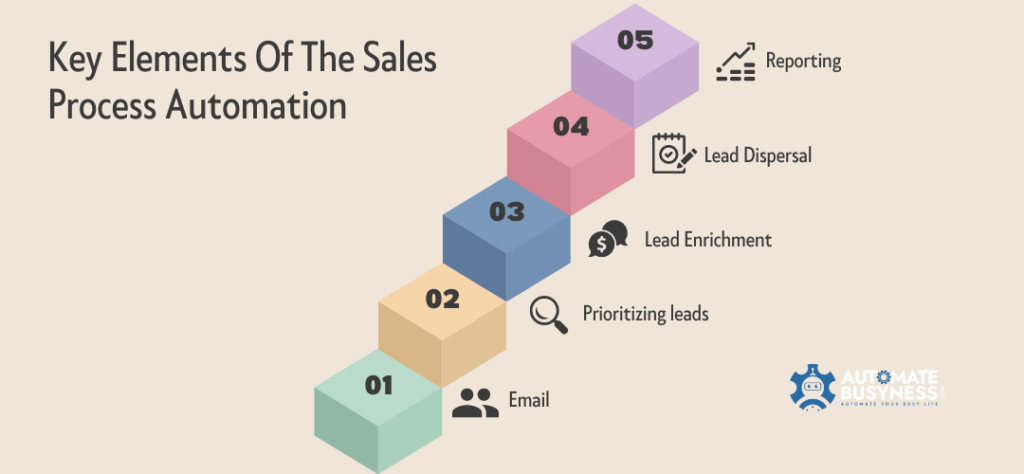Business automation, While navigating the significant uncertainties about the social and employment ramifications, business leaders, policy makers, and employees everywhere face significant obstacles in realising the full potential of automation’s positive economic impact.
Business leaders will have possibilities to increase performance and expand into new markets thanks to automation, but they will need to restructure their organisations and processes.

Almost any business process can perform better with the automation of certain tasks. Automation may boost throughput, boost reliability, and boost quality among other performance advantages, in addition to enabling labour cost reduction.
Automation For A Business Executives
Business executives may wish to take a complete inventory of their organization’s activities and construct a heat map of where automation potential is strong to determine where automation may be most profitably implemented to boost performance.
Business processes that have a high potential for automation could be redesigned to fully utilise automation technology after they have been identified (rather than just mechanically attempting to automate individual activities in the current processes). They might then evaluate the advantages and viability of these automated process changes.
Exploiting these changes could result in massive workforce displacements. Business executives would do well to think about how to best redistribute that labour, whether within their own companies or elsewhere, in order to enhance their own performance and uphold their corporate social responsibility.
Skill Development
Programs for skill development and retraining will be crucial in helping employees transition to new positions and activities. Additionally, it will be crucial for business executives to make sure that their organisations are adjusting to the coming of automation.
Strategically, automation might allow for the formation of extremely large organisations that can quickly spread instructions from the top. With the use of technology, measuring and monitoring will be simpler, giving managers access to powerful new tools.
Automation For A Large Company Owner
On the other hand, larger scale could make errors more serious, necessitating tighter quality standards. Automation and digital technology more broadly will allow small players, including individuals and small businesses, to take on project work that is currently primarily carried out within bigger enterprises, even as some corporations may be scaling up.
The expansion of very small and very large businesses could lead to an economy that resembles a barbell, with mid-sized businesses suffering as a result. Automation could increase competition across all industries, allowing businesses to expand into hitherto untapped markets.
The adoption of automation by policymakers may be coupled with initiatives to improve skills, spur job growth, and reexamine earnings and social safety nets.
Automation To The Policy Makers
Global policymakers will be strongly motivated to promote and facilitate the quick uptake of automation technologies in order to realize the full productivity boost required to meet economic growth targets.
Since the full economic benefits of automation depend on workers continuing to work, they will also need to consider how to enable the redeployment of potentially huge numbers of displaced workers.
Deployment Of Technology
The development of the technology and its deployment could both benefit from regulatory support for the early adoption of automation. That will necessitate spending on both the technologies’ development and infrastructure that is digitally enabled to support automation.
Challenges Of Implementing Automation :
One of the biggest socio-economic challenges will be the redeployment of the workforce. Governments are frequently not very good at predicting the kinds of jobs that could be created in emerging businesses. However, they could start conversations and stimulate discussions about the important societal issues that need greater focus and effort.
Governments might also try to promote new types of technology-enabled entrepreneurship and step in to assist people in acquiring the skills necessary for the age of automation.
To prevent further erosion of the wage share of GDP, which has fallen substantially since the 1970s, one of the tasks of the new era will be to ensuring that salaries are high enough for the new sorts of work that will be created.
Some concepts, including earned income tax credits, universal basic income, conditional transfers, shorter workweeks, and modified social safety nets, could be taken into consideration and tried if automation does put more pressure on many people’ wages.
Further Adjustments :
Many workers may need help adjusting to the new age as work evolves at faster rates of change across industries, locations, activities, and skill needs.
More interaction between workers and technology will be required, giving them more time to concentrate on inherently human qualities that computers cannot yet duplicate.
Both men and women will need to use machines increasingly frequently as part of their daily tasks in the workplace.
A more seamless integration of technology will provide managers and other human workers more time to devote to tasks that best suit their expertise, which machines still lack.
Mangers To Give Trainings
As a result, managers may need to devote more time to teaching, which could complicate the work and make it tougher to organise.
It will be crucial to inform people about the factors influencing automation in specific industries as they choose their educational path and career, in order to help them identify the skills that could be advantageous for them to acquire from a labor-market perspective and what activities will be complements of activities that are likely to be automated.
As the corporate environment changes and project work is outsourced by businesses, highly skilled people who work closely with technology will likely be in high demand and may be able to take advantage of new chances for independent work.
An Opportunity For All :
Middle-skill workers can look for possibilities for retraining to get ready for changes in their activities since these activities have the largest technological potential for automation (predictable physical activity, gathering and analysing data, etc.).
Technology will enable low-skill people to produce more and be more productive, but due to the potential oversupply of equally low-skilled workers, wages may be under pressure.
Policymakers and education providers will need to work together to strengthen fundamental STEM (science, technology, engineering, and mathematics) abilities and place a fresh emphasis on creativity as well as critical and systems thinking in order for education systems to adapt to a changing workplace.
In a time when everyone’s job is likely to change in some way, it will be crucial for everyone to develop agility, resilience, and flexibility.
Conclusion:
Finally, automation will provide people in the workforce a chance to use the intrinsic human qualities that computers find most difficult to imitate, including logical thinking and problem-solving, social and emotional intelligence, offering expertise, mentoring and developing others, and creativity.
For the time being, the world of work still requires both men and women to perform routine jobs that do not fully utilize their unique strengths.
These talents will become more and more valuable as machines take over more and more of the routine tasks of the workplace. We might all become more human due to automation.
ALSO READ
You may also like our other related articles on automation :







